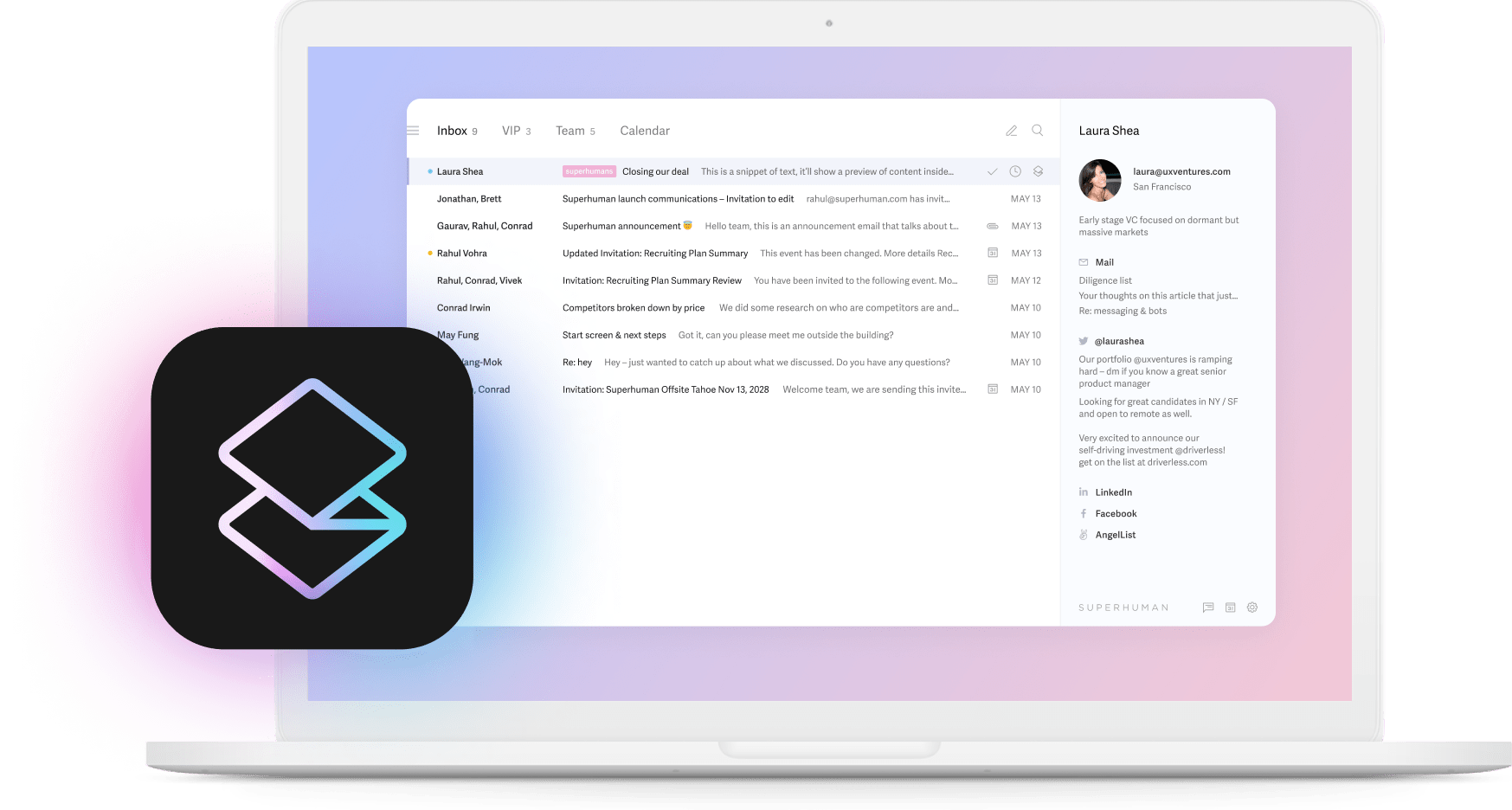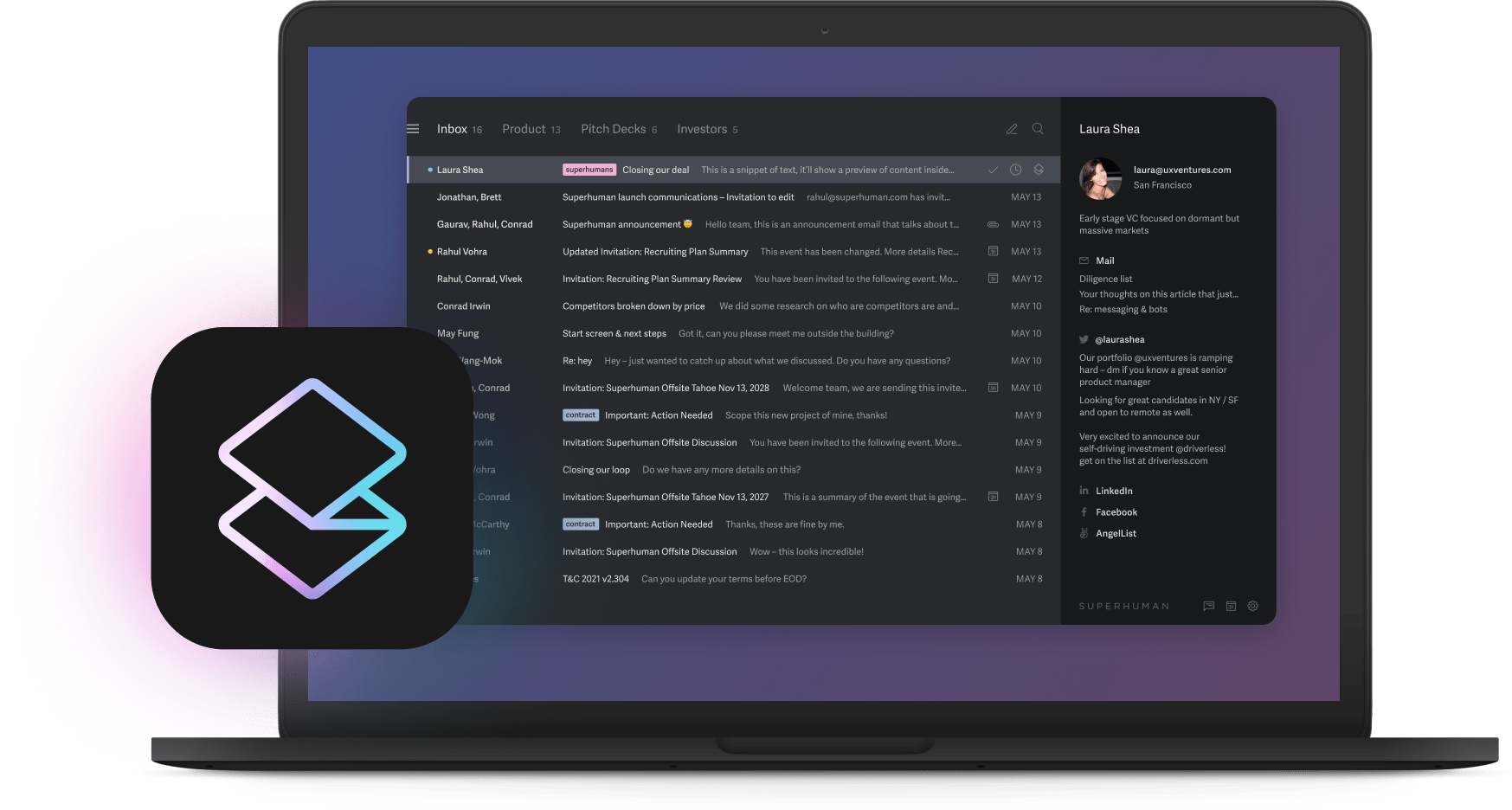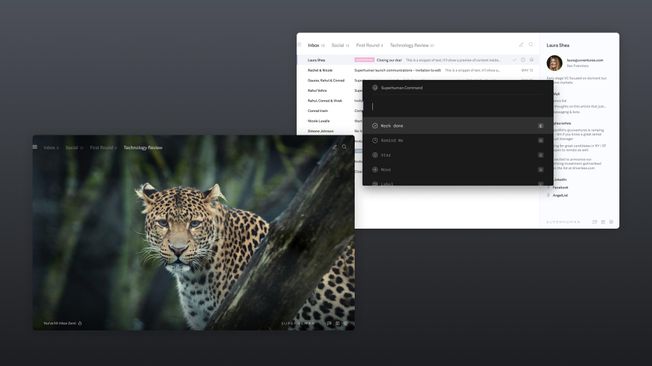
Picture this. You email a company asking about their product. You wait. And wait. Three days later, you've already bought from their competitor.
Most companies don't realize they're bleeding customers through their inbox. They think email is just email. But email response time statistics tell a different story. While the average email response time is 12 hours, 89% of customers expect businesses to respond within just one hour.
That massive gap? That's where fortunes get made and lost. Every minute you take to respond is a minute your customer spends wondering if you care about their business. The companies winning today figured out that fast email responses aren't just nice customer service. They're a competitive weapon.
Here's what the latest email response time statistics reveal about customer expectations, business performance, and the hidden costs of slow responses.
Important email response time stats in 2025
Let's start with where most professionals think they stand.
- 21% of professionals prefer a reply within four hours.
- 50% of professionals respond to work emails within two hours.
Your customers see it differently.
- 88% of customers expect a reply within 60 minutes.
- 60% of customers define "immediate" as 10 minutes or less.
- 46% of customers expect a reply in under 4 hours.
Now consider this. 99% of email customers check their email every day. They're not going anywhere. They're sitting there, refreshing their inbox, wondering where your response is.
The pattern couldn't be clearer. Customers want responses way faster than most businesses provide. The question isn't whether this expectation is reasonable. The question is whether you'll meet it before your competitors do.
Why some people respond fast and others don't
Ever notice how your teenager texts back instantly, but your colleague takes three days to answer a simple question? Response speed isn't random.
Age makes a huge difference. Teens reply to emails in an average of 13 minutes. They grew up expecting instant responses, so they give instant responses. As this generation moves into leadership roles, those expectations will become the norm everywhere.
Timing changes everything, too. Weekday mornings are best for emailing people. Send an email at 9 AM on Tuesday, and you'll get a faster, more thoughtful response than the same email sent at 4 PM on Friday.
Think about it this way. People respond faster on their phones than on computers. Simple questions get faster answers than complex ones. Emails with attachments take longer because someone has to open and review the files.
The takeaway? Work with human nature, not against it. Time your emails well, keep them simple, and remember that the person reading your email probably has fifty other things competing for their attention.
What fast response times look like
Different businesses have different standards for "fast." Understanding these benchmarks helps you set realistic goals while still pushing for speed that creates a real competitive advantage.
Customer service sets the highest bar. One-third of B2C customers expect a response within 1 hour when they email a company. Some industries handle this better than others. The logistics sector averages 12-hour email reply times, which sounds slow until you consider how complex their operations can be.
Sales teams face even more pressure. The ideal lead response time is within five minutes. Five minutes. Think about that next time you let a sales inquiry sit in your inbox for a few hours. Reality falls short, though. Only 37% of companies respond to leads within an hour.
Internal email works differently. Same-day responses work for most business situations, though fast-moving companies often need quicker internal communication to keep projects moving and decisions flowing.
These benchmarks aren't suggestions. They're minimum standards. Real advantage comes from being consistently faster than everyone else in your space.
Why response speed makes you money
Fast email responses don't just make customers happy. They directly affect your revenue, and the impact is bigger than most people expect.
Sales see the most dramatic effects. The average business lead response time is 42 hours. But watch what happens when you respond faster. A 1-minute response time can lead to 391% more conversions. Read that again. Responding in one minute instead of one hour can nearly quadruple your conversion rate.
Customer retention tells the same story. 48% of customers have switched brands because of poor customer service, and slow email responses are a major factor. Want another scary number? Businesses can see 15% churn increase with slow lead response time.
Here's the opportunity. 62% of companies do not respond to customer emails at all. While most of your competitors are ignoring customers or responding days later, you can win just by being consistently fast and helpful.
Even your email timing affects revenue. Timing emails right can increase conversions by 49%. Fast responses plus smart timing equals measurable revenue growth.
The math is simple. Faster responses equal more customers, higher conversion rates, and better retention. Slower responses equal lost revenue and frustrated customers who become someone else's customers.
How to get faster
Knowing you need to respond faster is easy. Doing it consistently is harder. The companies that succeed focus on measurement, systems, and tools rather than just trying harder.
Start with tracking the right numbers:
- Average Response Time adds up all your response times and divides by the number of emails. If your average is 8 hours, you know exactly where you stand against that 12-hour industry average.
- First Response Time measures how quickly you send that first reply, even if it's just "Got your email, looking into this."
- Thread Resolution Time tracks how long it takes to completely solve a customer's problem from start to finish.
- Response rate percentages show the brutal truth about whether you're answering emails or just letting them pile up in your inbox.
You can track these metrics in several ways. If you want to start simple, create a spreadsheet and log when emails arrive versus when you respond for a week. For more sophisticated tracking, Superhuman's Read Statuses show exactly when emails are opened, helping you measure the gap between receipt and response.
Split Inbox automatically organizes your emails by priority, making it easier to track response times for different types of messages. The Reminders feature helps ensure nothing falls through the cracks, improving your response rate percentages.
Individual improvements come from better systems. Organize your inbox so important emails stand out. Create templates for common responses, but personalize them so they don't sound robotic. Block specific times for email so you're not constantly reactive.
Team improvements require coordination. Share effective response templates across your team. Make it clear who owns different types of emails so nothing falls through the cracks. Create escalation paths for complex questions that need specialist knowledge.
Technology can speed up everything else you're doing. AI tools that learn from your previous emails can help you respond faster while maintaining your personal tone and style. Smart systems that categorize incoming emails help you focus on what matters most. Tools that summarize long email conversations save time when you're jumping into ongoing discussions.
The key is combining all these approaches. Individual skills plus team processes plus smart technology equals sustainable improvement rather than temporary bursts of responsiveness.
Setting standards that work
Good response time policies balance ambition with reality. Set the bar too high and your team burns out. Set it too low and you lose competitive advantage.
Start with realistic benchmarks. Aim for within 12 hours for customer service and within 24 hours for sales outreach. These aren't aggressive targets, but they're better than what most companies achieve. As your systems improve, you can get more ambitious.
Separate acknowledgment from resolution. You can acknowledge receipt of an email in minutes while still taking time to provide a complete answer. Customers appreciate knowing their email didn't disappear into a black hole.
Internal policies need different thinking. Focus on decision-making speed and project momentum. Same-day responses work for most internal situations, with urgent items handled through faster channels like Slack or direct messages.
Communicate your standards clearly. Auto Drafts can set expectations about response timeframes. Email signatures can include standard response commitments. For complex questions that require research, immediate acknowledgment with estimated resolution timeframes maintains customer satisfaction while ensuring quality responses.
Remember that policies only work if your team can meet them consistently. Better to under-promise and over-deliver than to set standards that make you look unreliable.
Common questions answered
What counts as a good business response time? For customer service, anything under 4 hours meets most customer expectations, though faster responses create real competitive advantages. Sales should target 5 minutes to 1 hour for optimal conversion rates. Internal communication typically expects same-day responses.
Do different industries have different standards? Absolutely. Complex industries with technical requirements often have longer acceptable response times. Consumer-facing businesses need faster responses due to higher customer expectations. Professional services typically maintain 4-24 hour standards, while retail and hospitality often target 1-4 hour windows.
Should internal and external emails have different standards? Yes. External customer emails require faster, more polished responses due to competitive pressures and service expectations. Internal emails can have longer response times, but should still support team productivity and fast decision-making.
How do you benchmark team performance? Track average response time, first response time, and response rate percentages monthly. Compare your performance against industry standards and customer feedback. Look for trends and improvement opportunities rather than just absolute numbers.
The competitive advantage hiding in your inbox
Most companies treat email like a necessary evil. They're missing the point completely.
The gap between customer expectations and typical business performance creates a massive opportunity for companies smart enough to prioritize responsiveness. While your competitors are still treating email as a reactive task, you can turn it into a proactive business tool that drives revenue growth and customer retention.
The best teams understand that email speed isn't about working harder. You need better systems, smarter tools, and clearer processes. Teams that can fly through their inbox, respond to twice as many emails in the same amount of time, and consistently meet aggressive response targets gain measurable advantages over competitors still drowning in their inboxes.
The data tells the story clearly. Response speed directly correlates with business outcomes. Revenue, customer satisfaction, competitive advantage, and team productivity all improve when you respond faster and more consistently.
Your inbox is waiting for an upgrade. The question is whether you'll treat faster email responses as a nice feature or recognize them as the competitive weapon they are. The companies that figure this out first will leave everyone else wondering what happened to their customers.





